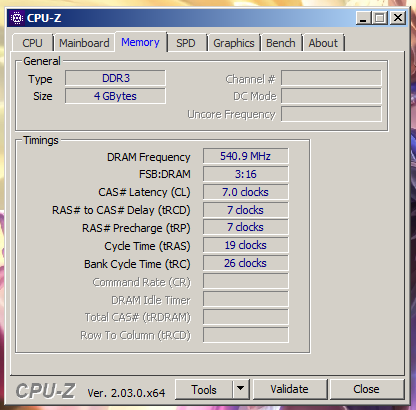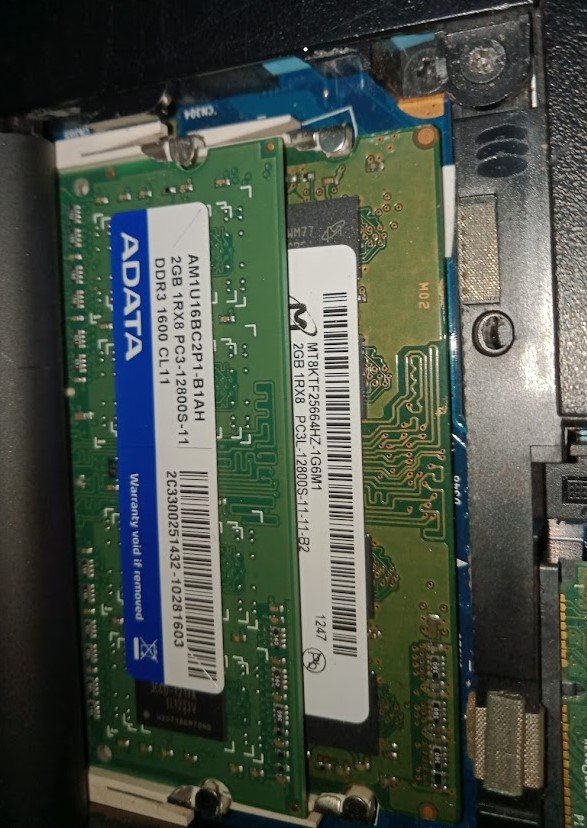Comparing: DDR3 SODIMM 1066MHz [Disk] vs Lexar High Performance 633X 64GB
In this comparison, we analyze two Disks: DDR3 SODIMM 1066MHz [Disk] and Lexar High Performance 633X 64GB, using synthetic benchmark tests to evaluate their overall performance. This side-by-side comparison helps users understand which hardware delivers better value, speed, and efficiency based on standardized testing. Whether you're building a new system or upgrading an existing one, this benchmark-driven evaluation offers valuable insights to guide your decision.

DDR3 SODIMM 1066MHz [Disk]
| Type: | Disks |
|---|---|
| Model: | DDR3 SODIMM 1066MHz [Disk] |
| Capacity: | 2GB |
| Interface: | DDR3 |

Lexar High Performance 633X 64GB
| Type: | Disks |
|---|---|
| Model: | Lexar 633X 64GB |
| Capacity: | 64GB |
| Interface: | UHS-I |
Specification Comparison Table
This specification comparison presents technical details of several devices or components to help you understand the key differences between each option. Use this table as a reference to determine which device best suits your needs.
| Specification | DDR3 SODIMM 1066MHz [Disk] | Lexar High Performance 633X 64GB |
|---|---|---|
| Brand | - | Lexar |
| Format | RAM Disk | MicroSDXC |
| Capacity | 2GB | 64GB |
| Interface | DDR3 | UHS-I |
Submission Comparison Table
This submission comparison table displays the number and details of benchmark data submissions from various devices or components. This information helps you understand the performance based on the benchmarks that have been tested, as well as providing an overview of the consistency and popularity of the available benchmark results.
| No. | Benchmark Software | DDR3 SODIMM 1066MHz [Disk] | Lexar High Performance 633X 64GB |
|---|---|---|---|
| 1 | ATTO Disk Benchmark - 64M |
Read: 1020.00 MB/s Write: 1080.00 MB/s |
Read: 91.10 MB/s Write: 58.12 MB/s |
| 2 | Cross Platform Disk Test |
Read: 658.01 MB/s Write: 265.28 MB/s |
Read: 90.51 MB/s Write: 57.42 MB/s |
| 3 | CrystalDiskMark |
Read: 746.24 MB/s Write: 828.18 MB/s |
Read: 87.70 MB/s Write: 58.83 MB/s |
Submission Comparison Chart
This chart visualizes the benchmark scores comparison between two hardware devices based on submitted data.
Media Gallery
A collection of photos of tested hardware. These images can help you identify the physical form, model, and variant of the hardware in question. These photos are from our own documentation, and if they are not available we may not be able to document them.
About Hardware DDR3 SODIMM 1066MHz [Disk]
DDR3 SODIMM 1066MHz is a third-generation memory module with a speed of 1066MHz that is commonly used in laptops and small devices. With the SODIMM form factor, these modules are often the standard choice for mobile computing systems, serving as the main memory for running operating systems, applications, and light to medium multitasking processes.
However, in this particular experiment, two 1066MHz DDR3 SODIMM modules from Micron and ADATA (2GB capacity each) were uniquely configured as a RAMDisk, a temporary storage space that uses RAM capacity to simulate a storage drive with much higher access speeds than SSDs or HDDs.
The 1066MHz DDR3 SODIMM-based RAMDisk test was conducted on an HP 1000 1b05au laptop device, powered by an AMD E1-1200 processor. The system is equipped with a 2x2GB DDR3 SODIMM 1600MHz RAM configuration, but due to processor architecture limitations, the memory only runs in single channel mode with an effective speed of 1066MHz. The operating system used is Windows 7, and to create and manage the RAMDisk, two popular applications, SoftPerfect RAMDisk and ImDisk Virtual Disk Driver, were used. The configured RAMDisk size was 2GB, utilizing some of the available RAM capacity.
Even though the device specifications are old and have limited memory bandwidth, the RAMDisk configured in this system was still able to show excellent performance in the read and write speed benchmarks. Based on tests using CrystalDiskMark, the read speed reached 746.24 MB/s, while the write speed touched 828.18 MB/s. In a follow-up test using ATTO Disk Benchmark with a 64MB block size, the read speed increased to 1020.00 MB/s, and the write speed reached 1080.00 MB/s. These results prove that even on older systems, RAMDisk configurations are still capable of delivering very high I/O performance, far surpassing conventional storage such as HDDs or even some SSDs.
Analysis
The results show that a 1066MHz DDR3-based RAMDisk is still capable of delivering data transfer speeds on par with entry-level NVMe SSDs, even outperforming many SATA SSDs and leaving conventional HDDs far behind. This makes RAMDisks an ideal solution for temporary use such as:
- Application caching,
- Temporary file storage,
- Fast computing with high I/O,
- Software or script testing without the risk of contaminating the main file system.
Although limited to a small capacity (2GB in this test), RAMDisk is still very useful for specific needs, especially for users with more than enough RAM or older devices that want to maximize their performance.
Test on:
Device: HP 1000 1b05au
Specs:
CPU: AMD E1-1200
OS: Windows 7
RAM: 2x2GB Single Channel 2 DIMM 1066MHz (Does not support dual channel due to limitations of the CPU, currently running single channel mode and 1066MHz)
Wednesday, 26 December 2012 14:27:32 | Update: 1 month ago
About Hardware Lexar High Performance 633X 64GB
The Lexar High-Performance 633x 64GB microSDXC is a high-grade memory card designed to provide fast data transfer speeds and reliable performance, especially for users who frequently handle large multimedia files. With UHS-I U1/U3 and V30 class speeds, as well as a 633x rating, the card offers read speeds of up to 100MB/s which is ideal for Full HD to 4K UHD video recording, high-resolution photography, and heavy application usage on Android devices.
The microSD card also has an A1 rating for app performance, which enables faster app loading times and more responsive multitasking on mobile devices. Compatibility is broad, supporting various types of devices such as smartphones, action cams, drones, tablets, and other recording devices. For more flexible use, Lexar also includes an SD adapter in the sales package so that the card can be used easily with DSLR cameras or laptops that have full SD slots.
Another advantage lies in physical durability. The Lexar 633x is designed to waterproof, extreme temperature resistant, shockproof, and X-ray resistant standards, making it a great choice for outdoor use or rugged field conditions. This card is perfect for content creators, travelers, and gamers who need large-capacity yet reliable storage.
Testing was conducted using a Lenovo IdeaPad Slim 3i 14ITL6 device with Intel Core i5-1135G7 processor, NVIDIA MX350, 12GB DDR4 3200MHz RAM, and Windows 11 Home 23H2 operating system. Testing also utilized a Lexar RW450 (rev B) card reader with GL3231S controller, using factory default conditions (exFAT file system, Quick Removal). In the CrystalDiskMark benchmark, the card recorded a read speed of 87.70 MB/s and write speed of 58.83 MB/s, confirming its performance claim as one of the fastest microSDs in its class.
Overall, the Lexar High-Performance 633x 64GB offers a combination of high speed, physical durability, and sufficient capacity to meet the storage needs of multimedia, gaming, and heavy applications on modern mobile devices. If you are looking for a microSDXC card with stable performance and ready to be used in various conditions, the Lexar 633x 64GB is a highly recommended choice.
Device Test (Testbed):
Device: Lenovo IdeaPad Slim 3i 14ITL6
Device Specs: i5-1135G7, NVIDIA MX350, 12GB RAM 3200MHz (4+8), 512GB NVMe SSD, USB 3.1 Gen 1, Windows 11 Home 23H2
Card Reader: Lexar RW450 rev B (GL3231S Controller)
Room Temperature: 30 celcius based on DHT11 Sensors
* This experiment is run when the item is newly purchased, no files condition (0% usage), exFAT file system (default), Device Manager Policy: Quick Removal (Default).
Friday, 12 January 2024 02:42:40 | Update: 1 month ago



